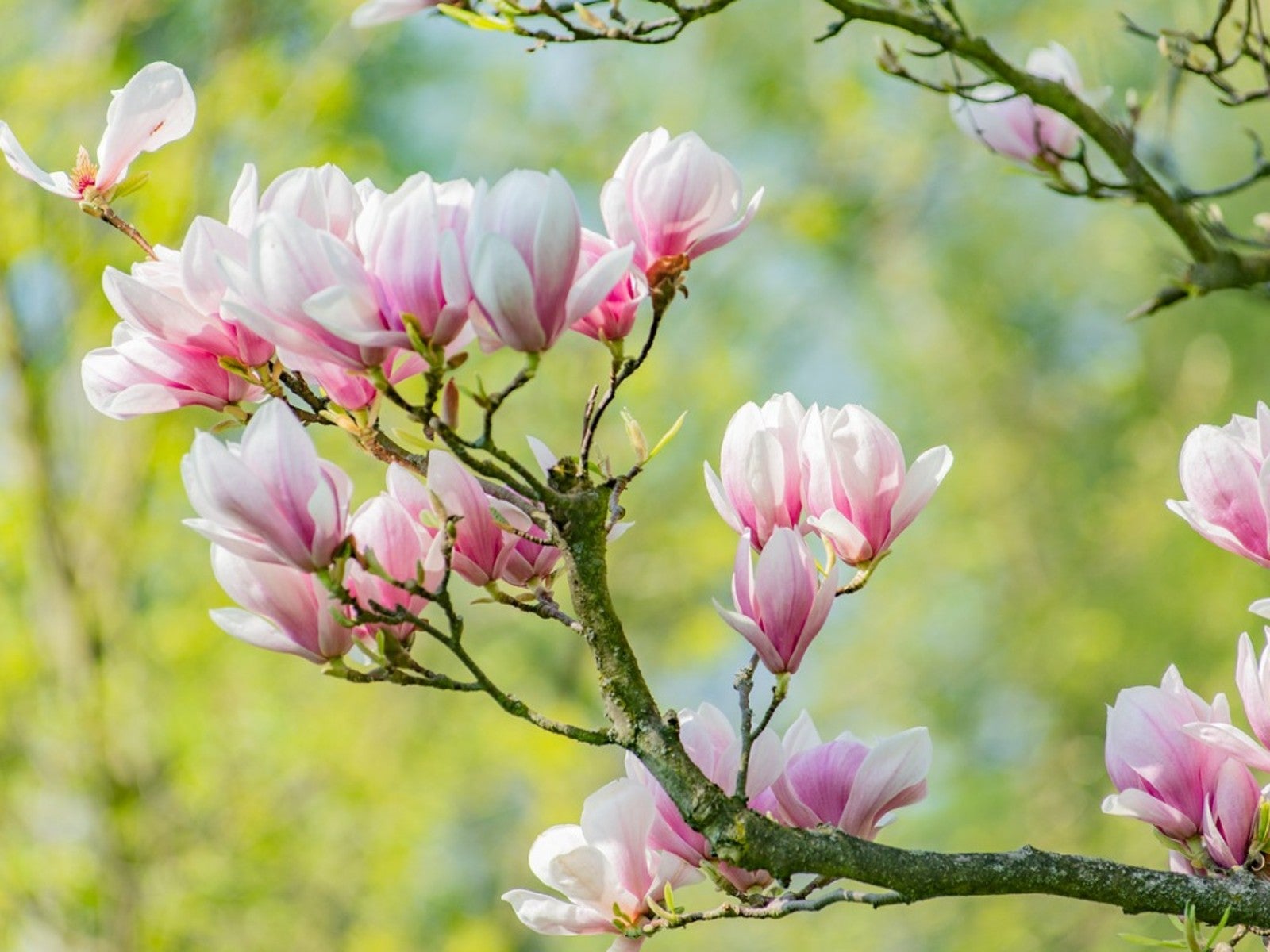How To Avoid Magnolia Tree Transplant Shock


It's hard to surpass the beauty of a magnolia tree. With their lavish spring flowers, glossy leaves and red cones of fruit, magnolias are prized as both specimen plants and as privacy hedges. Yet, sometimes homeowners find their magnolia isn't planted in an ideal location, which leads them to ask, “Can I transplant a magnolia tree?”
Moving Magnolia Trees
The answer is yes, it's possible to successfully move young magnolia trees. However, it's not an easy task as magnolias have an unusual root system. Unlike most trees, which have roots that grown down into the soil, magnolia roots grow horizontally along the ground and remain near the surface.
Additionally, the roots of magnolia trees are soft and rope-like, with few fine feeder roots. These qualities lead to a higher risk of magnolia tree transplant shock than with other types of trees. The larger the tree, the more difficult it is to move and transplant a magnolia. Trees with a trunk diameter less than 4 inch (10 cm.) have the best chance of survival.
To Prune Or Not To Prune
For years, root pruning has been the standard practice for transplanting a magnolia tree. The theory is that root pruning encourages the growth of a finer, more fibrous root system that is more capable of supporting the tree while it becomes established.
As it takes time for the tree to produce these new roots, pruning should be done six months to a year prior to transplanting. This technique is accomplished by inserting a sharp spade shovel 12 inches (30 cm.) deep in a circle around the tree. The diameter of the circle is dependent upon the size of the tree.
There is some debate as to whether this practice is necessary. A study by the University of Florida demonstrated that root pruning prior to transplanting magnolias only provided a marginal advantage over the unpruned magnolias in the control group.
How To Transplant A Magnolia Tree
When planting a magnolia, choose the location wisely. These long-lived trees grow between 1 and 2 feet (.3-.6 m.) per year. Some species can reach 60 to 80 feet tall (18-24 m.) and spread 30 to 50 feet (9-15 m.) wide. To reduce transplant shock, follow these guidelines:
Gardening tips, videos, info and more delivered right to your inbox!
Sign up for the Gardening Know How newsletter today and receive a free copy of our e-book "How to Grow Delicious Tomatoes".
- Hydrate – Thoroughly water the magnolia about an hour prior to transplanting.
- Prepare the hole – To reduce transplant shock, prepare the planting site prior to digging up the magnolia. Dig the hole the same depth as the rootball and plant the top of the rootball level with the soil line.
- Dig wide, not deep - When digging up a magnolia, make the rootball at least twice as wide as it is deep.
- Keep the root ball intact – Secure the rootball with burlap or cardboard and use a wheelbarrow or wagon when transporting the tree to its new location.
- Stabilize the tree – Use guy wires to prevent a newly-planted tree from leaning while it becomes established. To avoid damaging the bark, slide sections of rubber hose onto the wire where it makes contact with the trunk. Be sure to remove the wires once the tree is stable.
- Mulch – After planting, spread mulch around the magnolia to retain moisture, but avoid piling mulch against the tree trunk.
- Water regularly – Keep a recently transplanted magnolia hydrated for the first year.

Laura Miller has been gardening all her life. Holding a degree in Biology, Nutrition, and Agriculture, Laura's area of expertise is vegetables, herbs, and all things edible. She lives in Ohio.
-
 Looking For Plants To Give You The Soft And Fuzzies? Try These 5 Fuzzy Leaf Plant Options
Looking For Plants To Give You The Soft And Fuzzies? Try These 5 Fuzzy Leaf Plant OptionsLovers of texture, drama, silver foliage and tactile plants will adore these special sensory garden additions. These fuzzy leaf plant options will leave you all aglow
By Susan Albert
-
 Get Ready For A Summer Of Hummers! Grow These Full Sun Hummingbird Plants and Flowers
Get Ready For A Summer Of Hummers! Grow These Full Sun Hummingbird Plants and FlowersIf you’re lucky enough to enjoy a sunny backyard, make sure you are maxing out on your pollinator opportunities and grow these full sun hummingbird plants and flowers
By Tonya Barnett